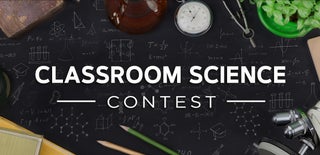Introduction: Rainbow Density Lab
This rainbow lab is a "layered solution" using different densities of salt water. The materials are super cheap and the end result is impressive.
Students are engaged in a hands-on experience that encourages real-world connections and forces them to follow the directions. The experiment also allows the flexibility for students to create their own experiments at the conclusion of the lab. The lab usually takes between 45 minutes - 1 hour to complete (excluding extension questions).
A few of the concepts that can be tied to the lab include; the difference between a solvent and a solute, what it means for a solution to be saturated, density, how liquids with different densities interact, investigate other ways to stack solutions, and students will be able to identify where liquids of different densities might come into contact in nature.
Step 1: Materials
Food Coloring
Water
Salt
5 small beakers
100 mL graduated cylinder
Spoon or stirring rod
Scale or electronic balance
Pipette
Masking tape
Pen / Marker
Step 2: Procedure
1. Label each of the 5 beakers 1-5.
2. Into each beaker, add salt and water in the amounts identified on the attached worksheet.
3. Stir each solution well to dissolve ALL salt.
4. Add two drops of food coloring in the amounts identified in the table on the worksheet.
5. Gently pour about 20 mL of the solution from beaker 1 into the graduated cylinder. Helpful hint: When using the pipette to transfer the solutions, pull the solution off of the top of the beaker (if you pull from the bottom and there are granules of salt that had not completely dissolved, gravity will pull them to the bottom of the graduated cylinder and mix your layers.).
6. Using the pipette, carefully layer 20 mL from beaker 2 on top of the 20 mL of blue liquid that is already in the grad. Add the layer by SLOWLY running the solution down the inside of the glass of the grad. Do NOT squirt the solution directly into the solution at the bottom of the cylinder.
7. Repeat for beakers 3-5.
Step 3: Final Product
The solution should remain layered as long as it is undisturbed. Place the best examples in a sunny window to leave on display. Evaporation could start to influence the layers, but then you just have an additional teaching tool.
Inevitably, some students will not follow the instructions. There is enough solution in each beaker to complete the experiment twice (50 mL of the solution but only need 20 mL of each color). Students can either restart the experiment if they made a mistake, or develop their own experiments with the remaining solutions if they did the experiment perfectly the first time.
Follow up questions include making connections to nature and an inquiry as to what other solutions/liquids might be used to recreate this layered experiment. Have fun and stay curious!

Participated in the
Classroom Science Contest











